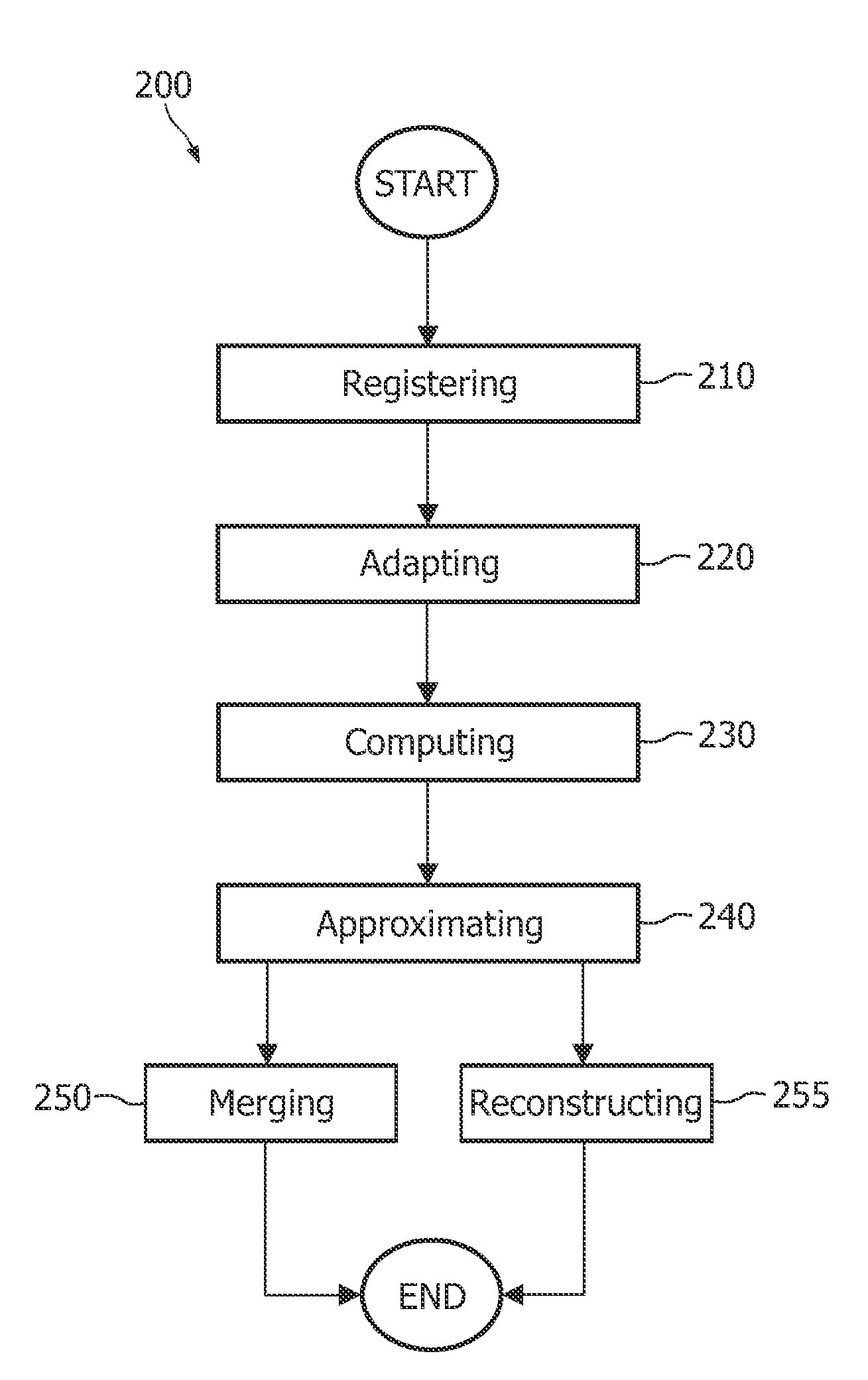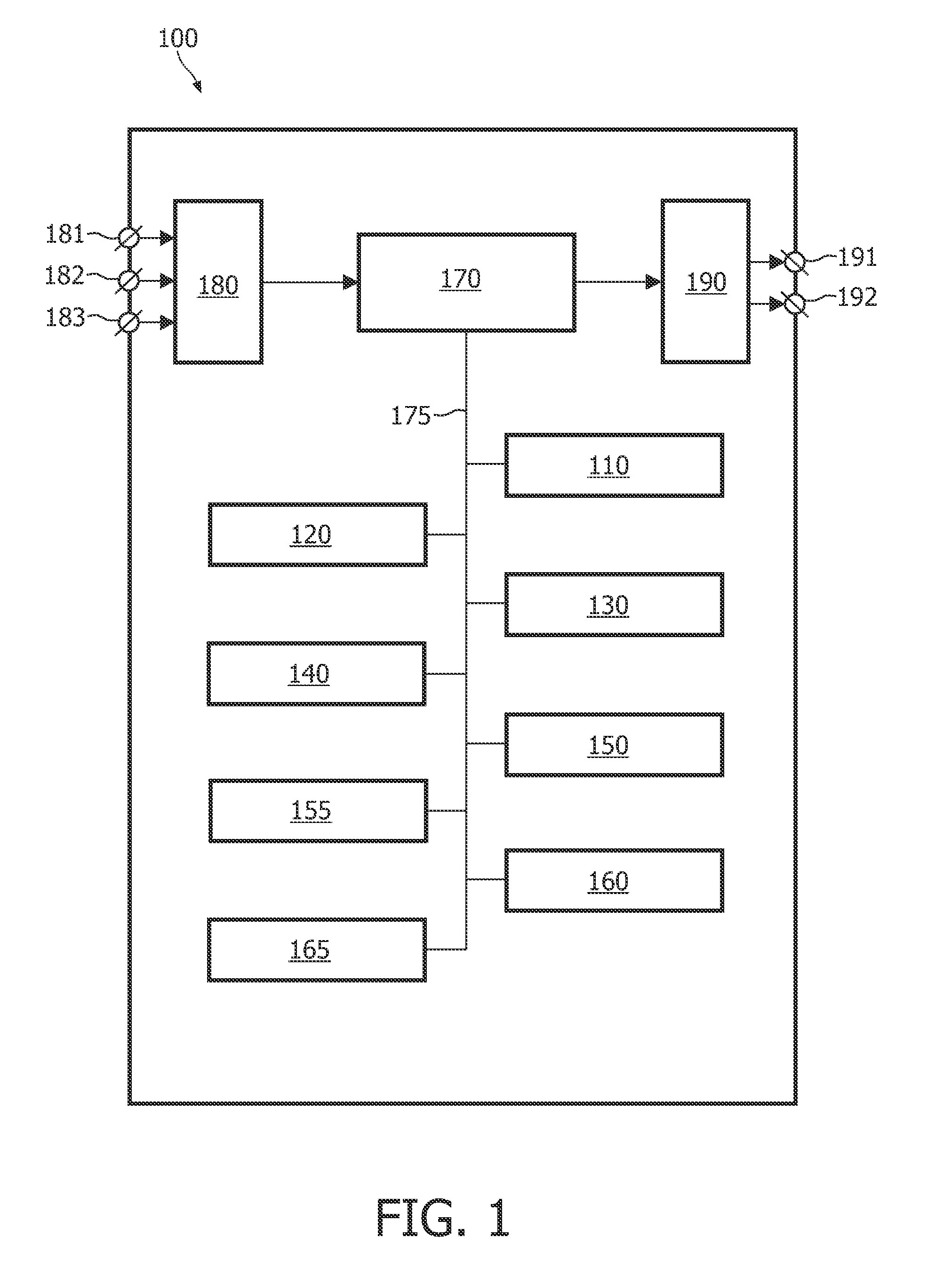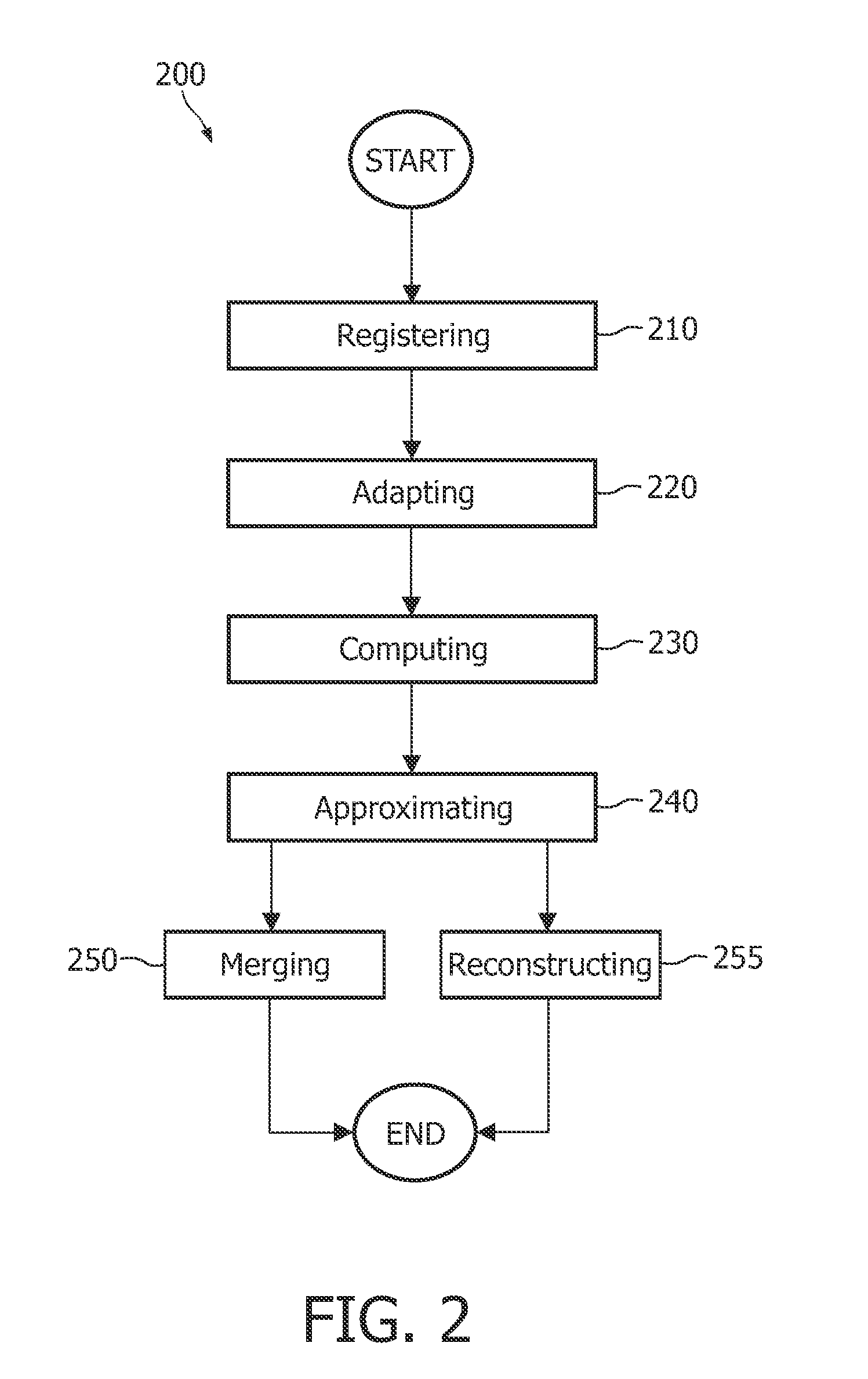Reduction of heart motion artifacts in thoracic ct imaging
- Summary
- Abstract
- Description
- Claims
- Application Information
AI Technical Summary
Benefits of technology
Problems solved by technology
Method used
Image
Examples
Embodiment Construction
[0039]FIG. 1 is a block diagram of an exemplary embodiment of the system for adapting a first model mesh to first image data and for adapting a second model mesh to second image data, the system comprising:
[0040]a registration unit 110 for registering the first model mesh with the first image data and for registering the second model mesh with the second image data on the basis of a computation of a registration transformation for transforming the first model mesh and for transforming the second model mesh; and
[0041]an adaptation unit 120 for adapting the registered first model mesh to the first image data on the basis of a computation of locations of vertices of the first model mesh and for adapting the registered second model mesh to the second image data on the basis of a computation of locations of vertices of the second model mesh.
[0042]The exemplary embodiment of the system 100 further comprises the following optional units:
[0043]a computation unit 130 for computing a sparse v...
PUM
 Login to View More
Login to View More Abstract
Description
Claims
Application Information
 Login to View More
Login to View More - R&D
- Intellectual Property
- Life Sciences
- Materials
- Tech Scout
- Unparalleled Data Quality
- Higher Quality Content
- 60% Fewer Hallucinations
Browse by: Latest US Patents, China's latest patents, Technical Efficacy Thesaurus, Application Domain, Technology Topic, Popular Technical Reports.
© 2025 PatSnap. All rights reserved.Legal|Privacy policy|Modern Slavery Act Transparency Statement|Sitemap|About US| Contact US: help@patsnap.com



